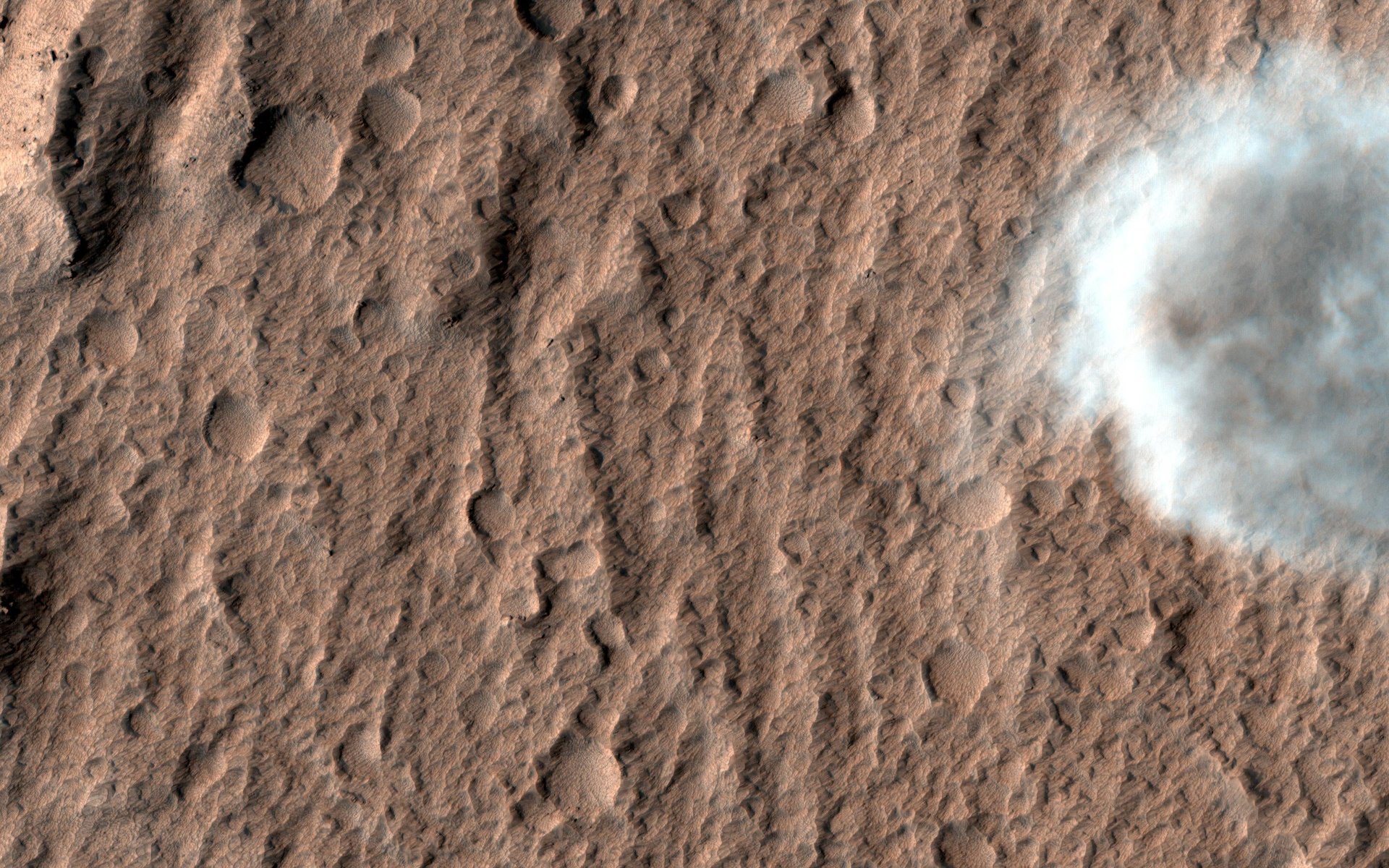For the first time, we can predict local weather on Mars just like we can on Earth
If you were ever to go to Mars, you’ll be told how to deal with its epic dust storms. “They are huge. They can cover the entire planet. They can last for months,” as Andy Weir, the author of The Martian, puts it.


If you were ever to go to Mars, you’ll be told how to deal with its epic dust storms. “They are huge. They can cover the entire planet. They can last for months,” as Andy Weir, the author of The Martian, puts it.
Now scientists will have to add another warning to potential Martians. A new study, published in Nature Geoscience, has found that Mars is likely home to night-time blizzards.
Aymeric Spiga at France’s Laboratoire de Météorologie Dynamique and his colleagues combined three commonly used computer models to simulate local weather on Mars. What they found is that, even though Mars doesn’t have as much water in its atmosphere as Earth, the low pressure and rapid changes in temperature create the perfect conditions for violent snowstorms.
During the day, like on Earth, icy clouds in the upper atmosphere on Mars absorb sunlight and keep the atmosphere warm and stable. As night falls, however, the temperature inside the clouds falls at 4℃ per hour, cooling the air and making it heavier. This cool air starts dropping, kicking off vertical winds that can reach speeds of as much as 35 kilometers per hour (about 22 mph), bringing with them ice particles.
We might have missed these snowstorms because, among all the landers and rovers we’ve sent to Mars, only one—Phoenix—was capable of observing the phenomenon at night time. When Phoenix spotted snowfall in 2008, researchers thought that it took four hours for the snow to fall about 2 kilometers (about 1.25 miles). Now Spiga’s model suggests that it’s likely to happen in as little as 10 minutes.
“The reason scientists missed these snowstorms is because they thought clouds didn’t have much impact on Martian weather,” says Spiga. His weather model is the first to be able to predict the behavior of clouds. These clouds are much thinner than those on Earth, but at night they thicken and the weather prediction would be overcast.
“We will be pushing for future rovers to be able to observe snowstorms more closely,” says Spiga.
The upshot is this is also the first model to be able to predict local weather Mars in a way we can on Earth. We can now predict fairly well the likely temperature, air pressure, wind, and cloud cover in a small region on Mars on any particular day. The predictions may not be as accurate as we have on Earth, but hopefully the models will improve before humans land on the planet.